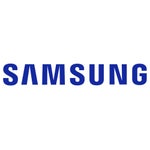News
iPhone 20 Camera: LOFIC Sensor to Bring Major Upgrade in 2027
iPhone 20 Camera: LOFIC Sensor to Bring Major Upgrade in 2027
The highly anticipated iPhone 20 camera is set to deliver Apple’s most significant leap in mobile photography yet. As the iPhone marks its 20th anniversary in 2027, Apple plans a standout release: not just a dramatic design overhaul, but a transformative camera experience powered by the advanced LOFIC sensor technology. Here’s a detailed, up-to-minute look at what users can expect and how the upcoming iPhone 20 camera aims to set new industry standards.
What is the LOFIC Sensor and Why Does It Matter?
Understanding LOFIC Technology
LOFIC (Lateral Overflow Integration Capacitor) is a next-generation sensor technology that enables camera sensors to capture far more light per pixel. This advancement translates to:
-
Higher dynamic range: Greater detail in both shadows and highlights
-
Better low-light performance: Brighter, clearer night shots
-
Improved image quality: Richer colors and less noise
For users, the iPhone 20 camera’s LOFIC sensor means every photo and video will gain notably in clarity and realism, whether you’re capturing sunsets, fast sports, or evening cityscapes.
iPhone 20 Camera Upgrades: What’s New?
Key Expected Features
-
LOFIC Camera Sensor: A major evolution from current sensors, first debuted in competing Android flagships.
-
Single-Glass Design: Not just engineering, but form—expected to wrap a glass-like display edge-to-edge, offering an immersive, futuristic feel.
-
Possible Multi-Lens Array: Multiple rumors suggest Apple may further expand the lens configurations to maximize the LOFIC’s potential, similar to approaches by Android leaders in 2025.
Rumored Camera Specs (as of post-October 2025)
-
Resolution: Unconfirmed, but likely 48MP+ primary sensor, possibly with a new periscope telephoto
-
Variable Aperture: Expected on the top Pro Max model
-
Improved HDR and Night Mode algorithms
-
Cinematic and ProRes video enhancements
How Does iPhone 20 Compare to Rivals?
The Android Competition
Huawei kicked off the LOFIC sensor move with its Pura 80 Ultra. Other Chinese smartphone leaders Xiaomi, Honor, Oppo, and vivo are all rumored to introduce LOFIC to their 2027 flagships. By comparison:
|
Brand |
LOFIC Sensor |
Year |
Other Unique Features |
|
iPhone |
Yes |
2027 |
Single-glass body; iOS 21 |
|
Huawei |
Yes (Pura 80) |
2025 |
Best-in-class night mode |
|
Xiaomi |
Rumored |
2027 |
Advanced AI imaging |
|
Oppo |
Rumored |
2027 |
High-speed periscope lens |
|
vivo |
Rumored |
2027 |
Gimbal stabilization tech |
Apple’s edge? The integration with iOS and Apple’s custom AI computation pipeline, which have consistently helped its hardware outperform rivals in real-world photography.
Latest (Post-October 2025) Developments
-
December 2025: Reports indicate Apple finalized LOFIC sensor supplier contracts, ensuring global production scale.
-
January 2026: iOS 21 camera app beta leaks showcase major algorithms designed specifically to leverage LOFIC’s sensitivity.
-
February 2026: Several patents surfaced describing “per-pixel AI tuning” for video on LOFIC-equipped iPhones.
Frequently Asked Questions (FAQ)
When will the iPhone 20 be announced?
Most analysts expect a September 2027 reveal at Apple’s annual launch event.
What’s the biggest advantage of the iPhone 20 camera?
Substantial gains in dynamic range and low-light imaging, alongside boosted video capabilities thanks to the LOFIC sensor.
Will older iPhones get LOFIC tech?
Current signs suggest it will debut exclusively on the iPhone 20 series and trickle down in future models.
How does LOFIC compare to standard sensors?
LOFIC handles bright and dark areas better, means richer, more life-like images in varied environments.
Conclusion: Why Wait for the iPhone 20 Camera?
For mobile photography enthusiasts and everyday users alike, the iPhone 20 camera with LOFIC is shaping up as a landmark upgrade—pairing new design ambitions with true technological leaps. Apple’s 20th anniversary iPhone is not just evolutionary, but a potential game changer in smartphone imaging.
Stay tuned for more updates as leaks and official announcements continue to surface.
Related Articles
- iPhone 20 Series Launch Date: Report Points to 2027 with Bold Redesign
- iPhone 18 12GB RAM Upgrade: Performance, AI Benefits, and Release Date
- iPhone 17 Specs Leak: How it Compares to the iPhone 16 and What to Expect in 2025












